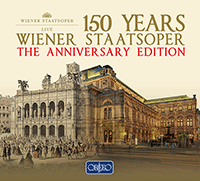Max Lorenz
In his home town of Düsseldorf Lorenz initially worked for an industrial company. Following vocal study with Max Pauli in Cologne, Ernst Grenzebach in Berlin and Karl Kittel in Bayreuth, he sought engagement by the Berlin State Opera but met with failure.
After he had won a prize in a newspaper-sponsored singing competition however he was engaged by Fritz Busch to join the Dresden State Opera, where he made his debut in 1927 as Walther von der Vogelweide / Tannhäuser. Lorenz remained with the Dresden company until 1931, also singing between 1929 and 1933 with the Vienna State Opera, where he was on the company roster from 1936 to 1944. He appeared at the Zoppot festival in 1930 and in 1931 made his debut at the Metropolitan Opera, New York singing Walther / Die Meistersinger von Nürnberg, Erik / Der fliegende Holländer, Siegmund / Die Walküre, the title role in Siegfried and Babinsky / Schwanda the Bagpiper. Having returned for the 1933–1934 season, Lorenz extended his New York repertoire with the title role in Tannhäuser and Herod / Salome.
His performance as Menelaus in Richard Strauss’s Die aegyptische Helena, first performed in Dresden in 1928, prompted the composer to recommend him to the Berlin State Opera, which was seeking a tenor for the same role. Following guest appearances there from 1931, Lorenz joined the Berlin company permanently in 1933. With his handsome figure and vigorous singing he quickly established himself as a Wagnerian singer of note. In addition he took leading parts in important premieres given in Berlin such as Paul Graener’s Der Prinz von Homburg (1935) and Paul von Klenau’s Die Königin (1940).
At the Bayreuth Festival Lorenz first appeared in 1933, initially as Walther, Siegfried / Der Ring des Nibelungen and in the title role of Parsifal, before moving on to the title roles in Lohengrin (1936) and Tristan und Isolde (1938). He sang at Bayreuth annually up to and including 1944.
His debut at the Royal Opera House, London came in 1934 as Walther. Lorenz was invited back to sing Siegfried and Erik in 1937, when he was described as an ‘eminently cultivated and musicianly singer’. At the Paris Opera he sang Walther in 1934 and Tristan in 1941.
Lorenz experienced problems with the German Nazi government because his wife was Jewish; it was only with the personal protection of Hermann Göring that he was able to continue singing in Germany and Austria during the war. Despite this close identification with the Third Reich, Lorenz remained extremely active after World War II.
At the Met between 1947 and 1950 he sang Tristan, Tannhäuser, Loge / Das Rheingold, Siegmund, Herod, Lohengrin and Parsifal. He returned to Paris to sing the title role in Otello in 1949, followed by Siegmund and Siegfried, Herod in 1951, and Aegisth / Elektra in 1953. In the renowned Furtwängler Ring at La Scala, Milan in 1950 Lorenz sang Siegfried / Götterdämmerung and he returned to Bayreuth in 1952 as Siegfried, followed by Siegmund in 1954. He appeared also in Italy at Bologna, Naples and Rome, and in South America in Buenos Aires.
Lorenz was a major presence at the Salzburg Festival, taking part in the premieres of Der Prozess (Gottfried von Einem, 1953), Penelope (Rolf Liebermann, 1954), Irische Legende (Werner Egk, 1955) and Das Bergwerk zu Falun (Rudolf Wagner-Regény, 1961) as well as singing the title role in Pfitzner’s Palestrina in 1955 under Rudolf Kempe. He was a member of the Vienna State Opera from 1953 to 1962, when he gave his farewell performance as Herod, and after retirement continued to teach in Salzburg and Vienna. His pupils included the tenor James King.
One of the major Wagnerian singers of the twentieth century, Lorenz looked good on stage and was a convincing actor with a voice of long-lasting heft.
© Naxos Rights International Ltd. — David Patmore (A–Z of Singers, Naxos 8.558097-100).























